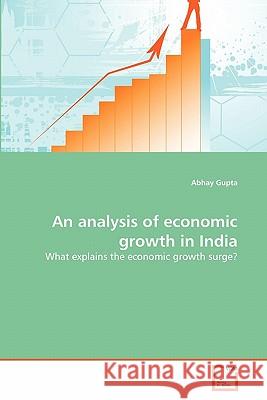An analysis of economic growth in India » książka
An analysis of economic growth in India
ISBN-13: 9783639306958 / Angielski / Miękka / 2010 / 164 str.
This book is an empirical study of economic growth in India over the period of 1960-2004. First chapter provides robust and reproducible period-wise growth estimates for India. Detailed growth accounting shows that without accounting for human capital, total factor productivity (TFP)differences over time account for 48% to 69% of the output variation. If we include the role of education, TFP growth accounts for 35% to 70% of the total GDP growth between 1960 and 2004. Chapter 2 calculates a large set of productivity growth estimates using the Annual Survey of Industries data. The results show that even though the net-value-added for all registered manufacturing grew at around 4.4% per year, the average yearly TFP growth rate was only 2.2%. In the sub-period of 1991-1997, input growth jumped but TFP growth became negative. The last chapter provides an explanation for the sluggish performance of Indian manufacturing before the reforms. The interaction of quantitative restriction policies and inflexible labor laws distorted the allocation of resources between intermediate inputs and labor inputs.











